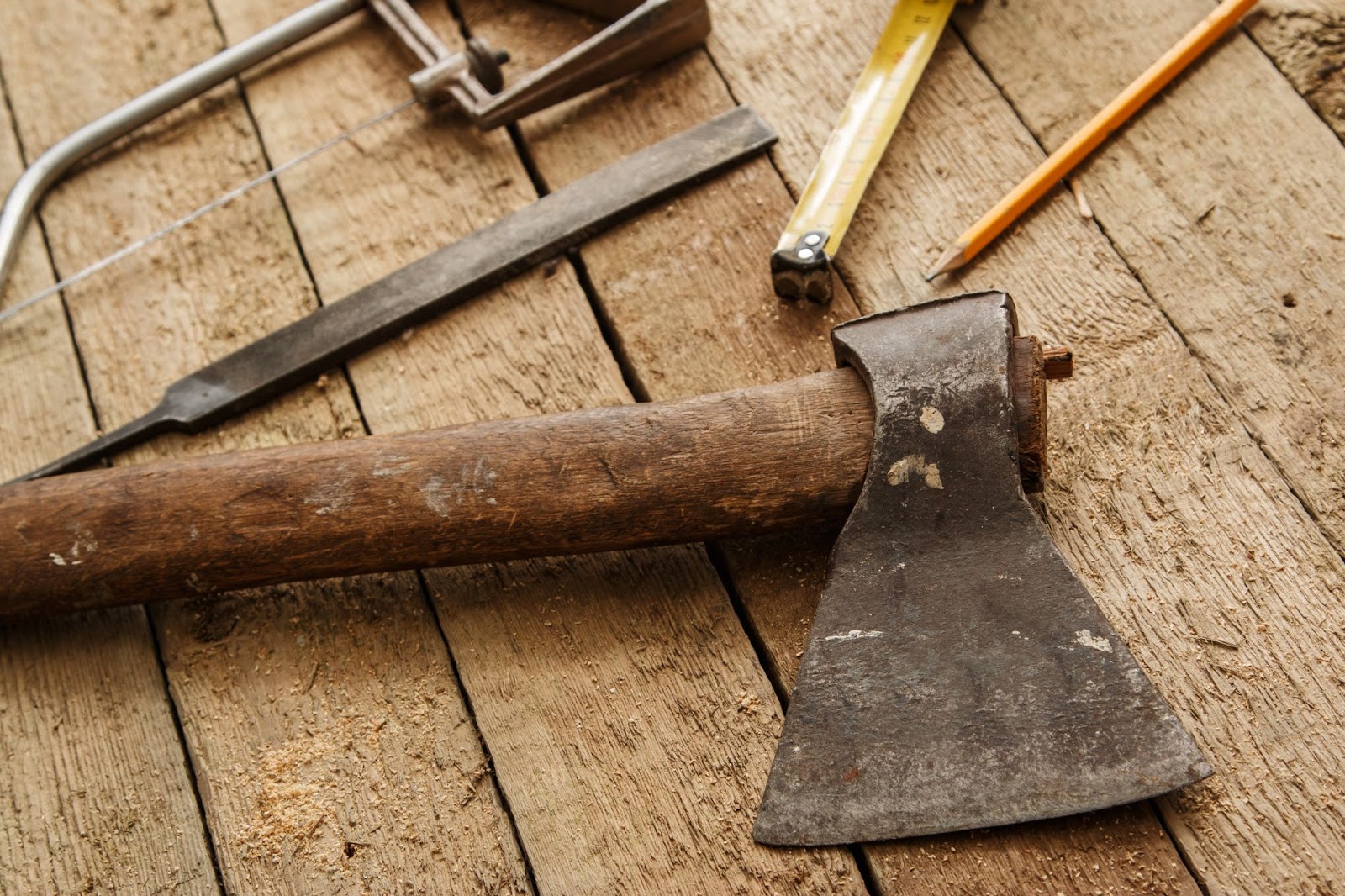
The Science of Organizing Competitive Axe-Throwing Events
There’s no doubt that competitive axe-throwing has grown in popularity over the last few years, and it’s easy to see why. It’s an exciting sport full of skill, tactics, and adrenaline. But there’s more to it than just the thrill of the sport. For some people, this activity is the best way to achieve catharsis.
There’s a behind-the-scenes structure that goes into making sure everything runs smoothly, everyone has a fair shot at winning, and everyone has an amazing time.
If you have stumbled upon this blog, you will explore the science of organizing competitive axe-throwing events. Learn more about the planning, logistics, and tactics for creating these exciting events. From the venue selection and setup to the rule implementation and scoring system, every element of event planning is carefully crafted to ensure safety, fairness, and fun for competitors and spectators.
How to Organize an Axe-Throwing Event
Organizing an axe-throwing event requires careful planning, attention to detail, and adherence to safety protocols to ensure a successful and enjoyable experience for participants and spectators.
Here’s a step-by-step guide to help you navigate the process of organizing an axe-throwing event:
Define Your Objectives
Start by clearly defining the objectives of your event. Determine the purpose, target audience, and desired outcomes, whether it’s a recreational gathering, a competitive tournament, or a team-building activity for corporate groups.
Choose a Venue
Select a suitable venue that can accommodate the size and scale of your event. Look for indoor facilities with ample space, proper lighting, and ventilation. When choosing the venue, consider factors such as accessibility, parking, and proximity to amenities.
Obtain Permits and Insurance
Ensure that you obtain any necessary permits and insurance coverage for your event. Check local regulations and ordinances regarding axe-throwing activities and obtain permits as required. Additionally, liability insurance should be considered to protect against unforeseen accidents or injuries.
Secure Equipment and Supplies
Arrange for renting or purchasing axe-throwing equipment, including targets, axes, safety barriers, and scoring systems. Ensure that all equipment meets safety standards and is adequately maintained. Stock up on first aid kits, fire extinguishers, and safety signage.
Prioritize Safety Protocols
Provide thorough safety policies and procedures to reduce risks and guarantee the health and safety of participants and spectators. Provide safety briefings and instructions on proper throwing techniques. Enforce rules regarding alcohol consumption, footwear requirements, and age restrictions to maintain a safe environment.
Recruit Trained Instructors
Hire experienced and certified axe-throwing instructors to oversee the event and guide participants. Ensure that instructors are knowledgeable about safety protocols, axe-throwing techniques, and emergency procedures. Consider offering introductory lessons or coaching sessions for novice throwers.
Plan the Competition Format
Plan the format, rules, and scoring system in advance of organizing a competitive event. Determine the number of rounds, the method of scoring (e.g., bullseye points, cumulative score), and any tie-breaking procedures. Communicate the competition format clearly to participants and ensure that judges or referees are appointed to oversee the event.
Promote the Event
Use social media, other online channels, and even local advertising to get your axe-throwing event out there and grab people’s attention. If you’re looking to get more people to attend your axe-throwing event, why not team up with a local business, club, or organization to get your event out there?
Execute the Event
On the event day, ensure all preparations are in place, and staff members are briefed on their roles and responsibilities. Welcome participants, conduct safety briefings and oversee the competition or activities according to the planned schedule. Correct any problems or concerns immediately and ensure a fun and stress-free experience for all participants.
Gather Feedback and Evaluate
After the event, feedback from participants, spectators, and staff members will be gathered to evaluate its success. Identify gaps and opportunities for next time. Send out surveys or have a debriefing session to get feedback and ideas for next time.
By following these steps and incorporating careful planning, organization, and attention to safety, you can successfully organize an axe-throwing event that engages participants, promotes camaraderie, and fosters a memorable experience for all involved.

The Best Axe-Throwing Techniques for Beginners
Embarking on the journey of axe-throwing can be both thrilling and daunting for beginners. The ability to throw an axe accurately toward an object requires patience, technique, and practice. Whether your goal is to throw an axe for fun or competitive purposes, learning these fundamental skills will put you on the right track to becoming an expert thrower.
If you’re new to axe-throwing, starting with the basics is important.Here are a few things you can focus on to get started:
Grip and Stance
Hold the axe firmly with both hands, keeping a comfortable grip. Stand with your feet shoulder-width apart and align your body with the target.
Body Alignment
Position your body perpendicular to the target, with your dominant foot slightly forward. Keep your shoulders squared and your eyes fixed on the bullseye.
Throwing Motion
Push the axe forward with a smooth, controlled movement. Enter the throw with a non-left foot while swinging the axe over your head. Release the axe when your arm extends fully, aiming for a smooth follow-through.
Consistency
Practice regularly to develop muscle memory and consistency in your throwing technique. Focus on hitting the target consistently before attempting more advanced throws or techniques.
With a little practice, patience, and focus on technique, first-timers can learn how to throw an axe quickly and enjoy the excitement of hitting the target.
How Can Axe-Throwing Events Boost Team Building?
One of the best things about axe-throwing is that it’s a great team-building activity.
Here’s how these events can strengthen bonds and foster collaboration among participants:
Shared Experience
Axe-throwing encourages teamwork and camaraderie as participants cheer each other on, share tips and strategies, and celebrate each other’s successes.
Communication Skills
Collaborating on throwing techniques and coordinating group activities during the event requires effective communication and cooperation among team members.
Trust and Support
Partnering up for tandem throws or participating in team competitions builds trust and encourages mutual support among team members.
Problem-Solving
Overcoming challenges and mastering new skills together fosters a sense of achievement and encourages creative problem-solving within the team.
Memorable Experience
Axe-throwing events provide a memorable and enjoyable experience that strengthens bonds and creates lasting memories among team members.
Axe-throwing events offer a unique and exhilarating opportunity to enhance team building. They strengthen bonds and camaraderie among participants by providing a friendly competitive environment, encouraging cooperation and communication, and sharing the experience of learning a new skill. The adrenaline rush and sense of achievement that follow successful throws produce an excellent and unforgettable team-building experience. This makes axe-throwing events valuable for fostering relationships and supporting team spirit.
Why Is Proper Organization Crucial for Axe-Throwing Competitions?
Proper organization is paramount in axe-throwing competitions. It ensures participants’ safety, the event’s smooth flow, and the tournament’s overall success.
Here’s why proper organization is crucial:
Safety
Axe-throwing involves sharp objects and requires a controlled environment to prevent accidents. Proper organization includes implementing safety protocols, providing adequate participant training, and ensuring all equipment meets safety standards. Organizers must also establish clear rules and guidelines to minimize the risk of injury during the competition.
Efficiency
Well-organized competitions run smoothly and efficiently, keeping participants engaged and on schedule. This involves planning the event timeline, coordinating registration and check-in procedures, and managing the flow of participants between throwing lanes. In addition, organizers need to foresee future difficulties and have backup plans ready to handle any problems that might come up.
Fairness
Proper organization ensures fairness and impartiality in the competition. This includes establishing consistent scoring criteria, monitoring adherence to rules and regulations, and transparently addressing any disputes or concerns. By maintaining fairness, organizers uphold the integrity of the competition and ensure a positive experience for all participants.
Participant Experience
Competitive events that are well-run provide an unforgettable experience for competitors, inspiring them to return in the future. This includes providing clear communication leading up to the event, offering amenities such as food and refreshments, and creating a welcoming atmosphere for competitors and spectators alike. In order to improve future events and identify areas for improvement, organizers should also ask participants for feedback.
Reputation
Proper organization is critical to the reputation of the competition and its organizers. A poorly organized event can tarnish the reputation of the competition and deter future participation. On the other hand, a well-executed event builds trust and credibility among participants, sponsors, and the broader axe-throwing community, establishing the competition as a reputable and respected fixture in the sport.
Axe-throwing competitions must be well-organized to guarantee participant satisfaction, safety, efficiency, fairness, and a solid reputation. By prioritizing organization and paying attention to detail, organizers can create successful and memorable events that contribute to the sport’s growth and popularity.
Top 5 Strategies for Hosting Competitive Axe-Throwing Tournaments
To guarantee that both competitors and spectators have an exhilarating and unforgettable time, hosting a competitive axe-throwing tournament requires careful planning and execution.
Here are five strategies to help organizers host successful and competitive axe-throwing tournaments:
Establish Clear Rules and Regulations
The rules and regulations of the tournament, such as the eligibility requirements, safety procedures, and scoring criteria, should be clearly stated. Communicate these rules to participants well in advance and provide opportunities for clarification or questions to ensure understanding and compliance.
Provide Adequate Training and Safety Measures
Give careful instruction on axe-throwing techniques and safety precautions to ensure the safety of participants. Ensure all throwing lanes are equipped with safety barriers and trained staff members are present to monitor and assist participants as needed. Emphasize the importance of proper technique and adherence to safety protocols throughout the tournament.
Create a Competitive Atmosphere
Foster a competitive atmosphere that motivates participants to perform at their best. Offer incentives such as prizes or trophies for top performers, and incorporate elements such as leaderboard displays or live scoring updates to heighten excitement and engagement. Encourage friendly rivalry and sportsmanship among competitors to enhance the overall experience.
Offer Variety in Competition Formats
Provide a variety of competition formats to cater to different skill levels and preferences. This may include individual competitions, team events, elimination rounds, or themed challenges. Offering diverse competition formats keeps participants engaged and allows them to showcase their skills differently, adding excitement and unpredictability to the tournament.
Promote Spectator Engagement
Engage spectators by providing opportunities for involvement and entertainment throughout the tournament. This could entail having vendors selling food and drinks, arranging spectator-friendly events like axe-throwing competitions or mini-games, and setting up cozy places to sit and watch. Encourage spectators to cheer for their favorite competitors and create a lively and supportive atmosphere that enhances the overall excitement of the event.
Hosting a successful competitive axe-throwing tournament requires careful planning and execution. By implementing these strategies, organizers can host tournaments that captivate participants and spectators alike, fostering a vibrant, axe-throwing community. These top five strategies lay the foundation for hosting dynamic and engaging axe-throwing tournaments that foster camaraderie, skill development, and excitement within the axe-throwing community.
Unleash Your Inner Lumberjack: Axe-Throwing Events
Whether you’re a novice looking to get your axe-throwing game up to scratch, a team looking to build stronger relationships, or an adrenaline junkie ready to show off their lumberjack skills, axe-throwing events provide an exciting, team-building and personal development experience that’s sure to leave a lasting impression.
So gather your friends, colleagues, or teammates and embark on a journey of adventure and camaraderie at your nearest axe-throwing venue. It’s time to unleash your inner lumberjack and experience the exhilarating thrill of hitting the bullseye!
Are you curious about throwing an axe-throwing party? Check out our Propel Axe blog to learn more about our exciting events and services for players of all ages.


 720-330-9755
720-330-9755